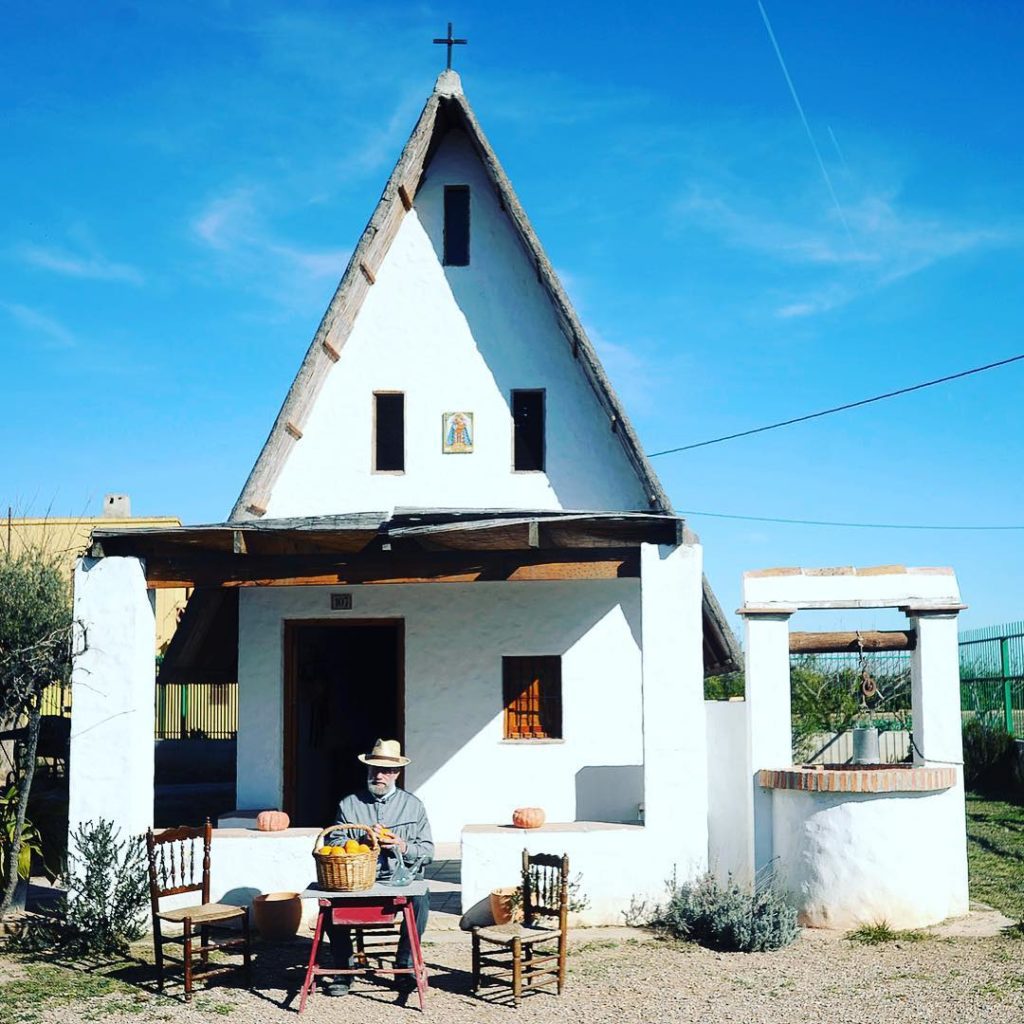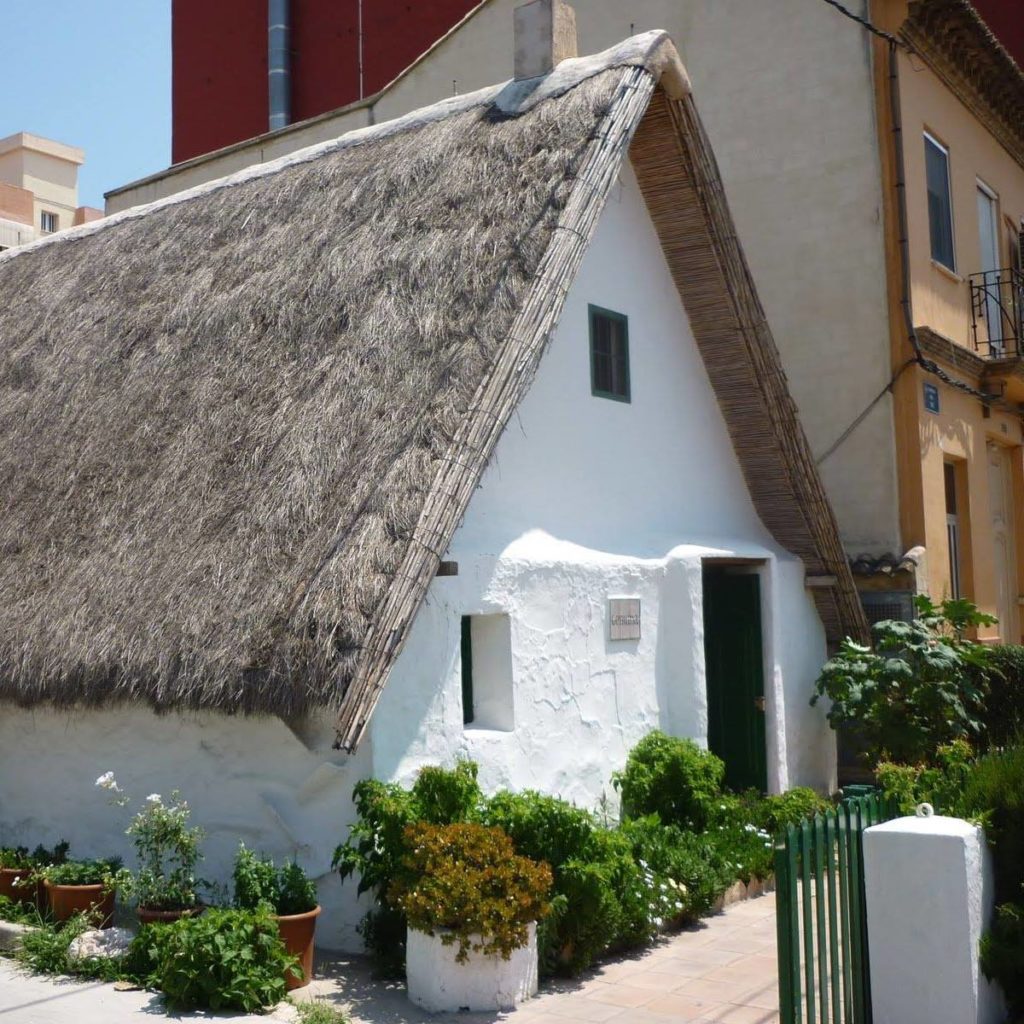Valencia’s rural architectural icon, the ‘barraca’, has long since stood as a symbol of Valencia’s traditional farmland. It is known locally as l’Horta, or La Huerta. Where once an abundance of proud ‘barracas’ stood, now, many are in a near-derelict state. How can you help? Through eating. Daniel Hazelhoff reports….
Valencia’s agricultural hub la Huerta is home to the iconic barraca. These age-old examples of early Valencian life are scattered all over la Huerta, and extend down to Albufera, home to Valencia’s rice fields. But what is a barraca and why are they in danger of disappearing?
A History Of Valencia’s Barracas
A barraca is a traditional Valencian home, which housed workers and their families. Those who tended to the land built these small buildings out of materials such as mulberry or poplar trunks, reeds, mud, and grasses, gathered from the area around them.
The famous Valencian author Vicente Blasco Ibañez wrote La Barraca in 1898. It was an incredibly successful book, its English translation sold more than one million copies. It tells the story of the battle between landowners and their tenants. Its natural style owed a great deal to the works of French author Emile Zola.
Three main types of barracas exist. Those that scatter la Huerta are a prime example of the current state they are in. These homes were lived in by the farmers that toiled in the Valencian landscape. The l’Albufera barracas, where the rice farmers worked and stored their rice, is where you will find most intact examples. And finally, those used by the fishermen, along the Valencian coast.
These buildings date back to the 16th century and are usually crowned by a cross. Some sources say this may be to distinguish the Christian households from that of the Moors. However, it may simply be religious symbolism. Either way, catholicism played a big part in Valencian life during the time and has prevailed as the active belief system throughout the centuries.
El Palmar holds some fantastic examples of well-preserved barracas and also boasts some of the best paella restaurants in Valencia. Paella dates back to between the 15th and 16th centuries, around the same time these traditional homes were being built. So it’s clear there is an intrinsic link between the two.

Cultural Heritage In Danger
This part of Valencia’s history is in danger of fading away, eroded by weather, and inaction from the Ayuntamiento. La Huerta Nord used to be home to so many more barracas, but due to the lack of upkeep by private proprietors or the Ayuntamiento, many are crumbling into dust. Their muddy reeds are exposed to the elements, and their roofs are caving in on themselves.
The non-profit association Círculo Por La Defensa Y Difusión Del Patrimonio Cultural has recently called out the Ayuntamiento for their lack of care and effort in regards to the preservation of these historic houses. Where these historic homes once stood proud in the farmland, there is now a real sense of abandonment and disrepair.
They visited the barracas in Panach, Cal Carro, Coco Navarro and Cucalo, where they found, unrehabilitated and dilapidated husks of what those barracas once were.
“If the Ayuntamientos of Valencia and Alboraya don’t act fast, all of these barracas will end up disappearing. Although these barracas are private property, the Ayuntamientos must maintain the integrity of these barracas, if private owners can not do so,” reports the Círculo.
The barraca holds deep cultural importance when it comes to Valencia’s agriculture and rural architecture. Through organisations such as the Círculo, many are taking an initiative in respecting and creating awareness for these historic sights. If you haven’t visited Valencia’s Barracas, we at Valencia Life urge you to do so, before it’s too late.

Helping While Eating
Many of Valencia’s barracas are disappearing. However, there are still some prime examples of traditional barracas, serving traditional Valencian food. You can help increase awareness, at least on a personal level, by enjoying a good meal in one. By sitting down and absorbing the history, you can find an appreciation for a life that once was. This is a way in which you can help preserve this fascinating aspect of Valencia history and culture.

La Barraca de Toni Montoliu
You can find La Barraca de Toni Montoliu in Meliana. The spot makes a well-received traditional Valencian paella. It is regarded by many as one of the meccas of Valencian paella. The owner and customers can pick vegetables straight from the source, in la Huerta, where he explains its history. Every ingredient in their paella comes from local providers.
- Casa Jauma, Partida de l’Ermita, 24 46133, Meliana, Valencia; +34 629 68 98 05; Wednesday to Saturday from 2:00 – 18:00; Monday and Tuesday closed.

La Genuina
La Genuina in Pinedo. A 200 year old Valencian Barraca stands emblematically in la Huerta de Pinedo. It’s a family-run restaurant, that specialises in rice dishes, but they also serve traditional Valencian and Mediterranean dishes. It’s a small place that sources fresh products straight from the market.
- Carrer del Riu, 283 46012, Valencia; +34 963 24 86 63; Sunday to Thursday from 13:00 – 17:30; Friday and Saturday from 13:00 – 17:30 and 20:00 – 23:30
Keep up to date with news in Valencia HERE.
